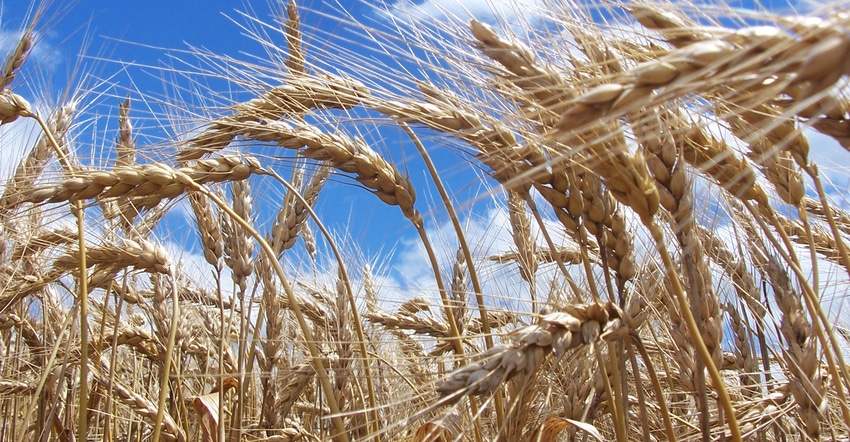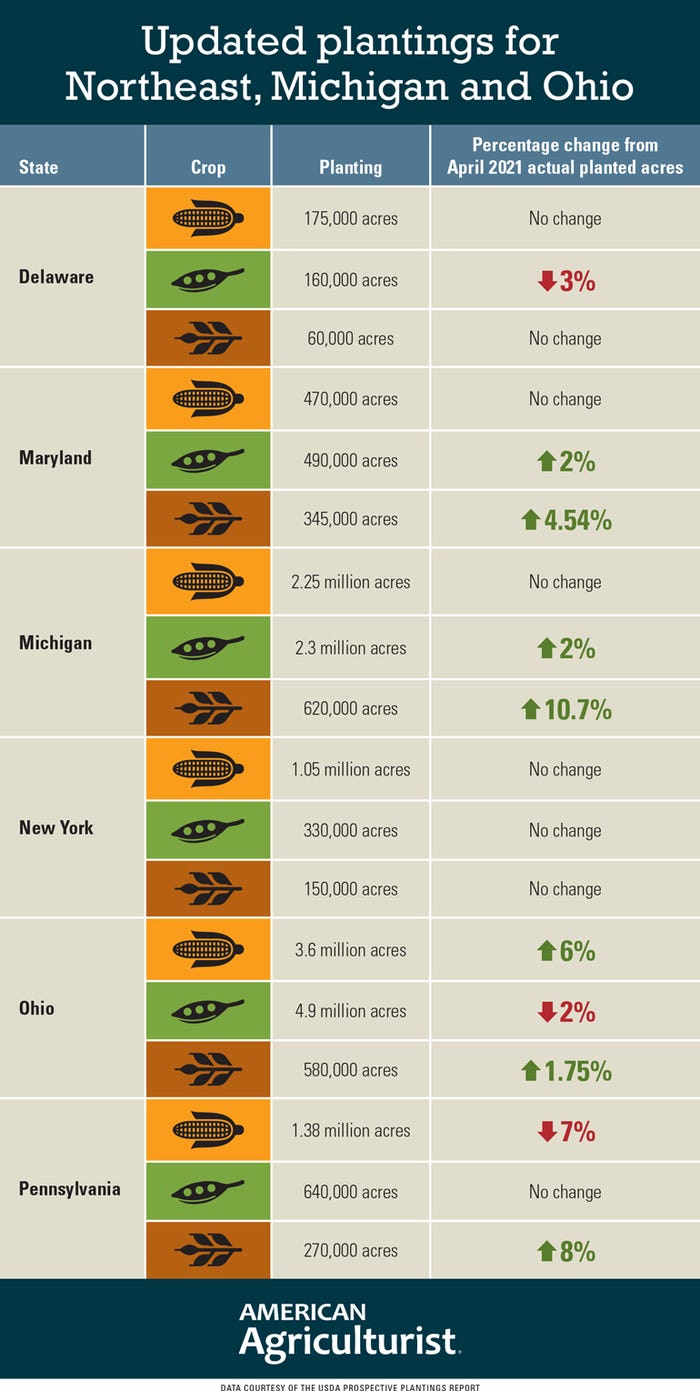
Just like USDA’s national report, there were only slight changes to the June acreage update for the Northeast, Michigan and Ohio. But some data points did stick out.
Maryland farmers planted nearly 5% more winter wheat than was reported back in spring. They also planted slightly more soybeans.
Michigan farmers planted 10% more wheat than was originally reported and slightly more soybeans.
Ohio farmers planted nearly 6% more corn and dropped soybean acres. Wheat acreage was also up slightly.
Pennsylvania’s corn acreage dropped nearly 7%, and soybean acreage was unchanged. At the same time, winter wheat acres — 270,000 — are up 15% from 2020 and are at their highest level since 1976, says King Whetsone, director of the National Agricultural Statistics Service Northeastern Regional Field Office.
Take a look at the graphic below to see comparisons between the early spring and June reports.

NASS compiled its report by surveying 9,100 segments of land and 65,900 farm operators during the first two weeks of June.
Nationally, the USDA now estimates 92.7 million acres of corn, up from its March forecast of 91.14 million acres and 2% above 2020. Farmers are expected to harvest 84.5 million acres, 2% higher from 2020.
Soybean plantings are now estimated at 87.6 million acres, which is 5% higher than 2020 but identical to USDA’s projections from March.
Other states’ data:
Corn
Connecticut: 26,000 acres, up 2,000 acres
Maine: 31,000 acres, up 1,000 acres
Massachusetts: 14,000 acres, unchanged
New Jersey: 90,000 acres, up 3,000 acres
Vermont: 85,000 unchanged
West Virginia: 51,000 acres, unchanged
Hay
Connecticut: 45,000 acres, down 1,000 acres
Delaware: 11,000 acres, down 3,000 acres
Maine: 114,000 acres, up 10,000 acres
Maryland: 189,000 acres, down 11,000 acres
Massachusetts: 66,000 acres, down 6,000 acres
Michigan: 790,000 acres, up 10,000 acres
New Hampshire: 42,000 acres, unchanged
New Jersey: 100,000 acres, down 6,000 acres
New York: 1.13 million acres, up 70,000 acres
Ohio: 870,000 acres, up 10,000 acres
Pennsylvania: 1.21 million acres, down 145,000 acres
Vermont: 160,000 acres, down 7,000 acres
West Virginia: 555,000 acres, up 15,000 acres
Barley
Delaware: 21,000 acres, no change
Maine: 14,000 acres, down 1,000 acres
Maryland: 36,000 acres, up 2,000 acres
Michigan: 10,000 acres, down 1,000 acres
New York: 11,000 acres, up 2,000 acres
Pennsylvania: 42,000 acres, down 3,000 acres
Oats
Maine: 28,000 acres, up 2,000 acres
Michigan: 60,000 acres, down 10,000 acres
New York: 50,000 acres, down 2,000 acres
Ohio: 60,000 acres, up 5,000 acres
Pennsylvania: 65,000 acres, down 21,000 acres
About the Author(s)
You May Also Like






